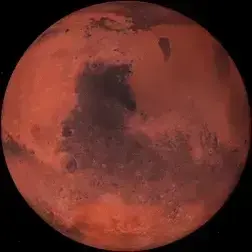- cross-posted to:
- space@lemmy.world
- cross-posted to:
- space@lemmy.world
Black holes the size of an atom that contain the mass of an asteroid may fly through the inner solar system about once a decade, scientists say. Theoretically created just after the big bang, these examples of so-called primordial black holes could explain the missing dark matter thought to dominate our universe. And if they sneak by the moon or Mars, scientists should be able to detect them, a new study shows.
Cool, one more thing to keep me up at night
And one more… https://www.williamflew.com/blue.html
I thought these were disproved by lack of gravitational microlensing?
The main way you’d see that kind of microlensing is if they aggregated.
But given the way gravity works, they should aggregate, otherwise why call them black holes?
If they were relatively evenly distributed would that counteract lensing?
Yes, it would just be surprising because, gravity should make them not be evenly distributed.
The whole thing with dark matter is that it’s this magic stuff that causes gravity but isn’t affected by it, which… is not how gravity normally works.
Though there is still room for it, we just need a better framework other than “I added 3 and 5 and got 12, so obviously I must mean to add 3 and 5 and 4 too”.
You’re mistaken. Dark matter, whatever it is, isn’t affected by anything except gravity. It interacts with gravity just like “normal” matter.
The evidence is also significantly better than you’re describing
Then it should also coelescce, particularly since it doesn’t have the em force to keep it repelled, the universe should be dominated by massive dark matter black holes.
Yes, there’s math that explains part of the distribution, but also there is 0 force opposing any collapse we’d have a lot more neutron stars and other degenerate matter catalyzed by dark matter.
We have hypotheses like this when our observations don’t make sense and we need to explain them, it’s definitely a possibility but we still have room to understand the large scale physics at play.
You don’t need a force to prevent collapse if there’s no drag force to slow things down. It would actually be almost impossible for a cloud of dark matter to collapse since any individual particle has momentum and no way to slow down, so they’ll all be in some sort of mutual orbit
I’m guessing you’ve seen as many lorentz attractor simulations as I have, what always happens is something like tidal effects or angular momentum means 90% slow down while a few particles get shot out of hell at ludicrous speed.
The effect is similar to drag, and is basically how we get entropy even without em effects.
If dark matter is fully explained by such black holes, their most likely mass, according to some theories, would range from 1017 to 1023 grams—or about that of a large asteroid.
In case this doesn’t tell you a lot, 1017 grams is half the weight of Mount Everest, and 1023 grams is 4x the weight of the Antarctic ice shield.
The earth is estimated to “weigh” 13,170,000,000,000,000,000,000,000 pounds. (That is weird when you think about it. The weight of the earth being based on what something weighs on earth, I mean.)
Mt. Everest is only about 357,000,000,000,000 pounds and is just a tiny fraction of the mass of the earth.
So. My point is that we need a better way to portray scale of things in the universe. AUs work to a point but then we have to quickly move to parsecs. Parsecs quickly give way to light years. (Or vice-versa, depending on how you visualize things better.) Light years kinda work, but only for between 14-26 billion years. Even after all of that, I can hardly still fathom the size of Mt. Everest. (This was a rant, but not an angry rant.)
Weight in pounds isn’t the right unit here. Weight varies depending on the strength of the gravitational field you’re in, whereas mass does not. A kilogram here on earth weighs 2.2lbs but on the moon it only weighs 0.36lbs.
I called that out. It was the weight of the earth… on earth.
In the English Engineering System, the unit of mass is 1 pound mass (lbm), and is equivalent to the amount of matter that weighs 1lb at 1G. I won’t argue that EES is a good system, but it does at least have a kludged unit for mass. It has an equally kludged unit for force, too, called pounds force (lbf).
I cannot fathom the size of anything on an astronomical scale. I have seen the videos that zoom out and show Earth at scale with the Sun and then the Sun at scale with other stars. No matter how many times I view the facts it will be incomprehensibly large.
The earth is estimated to “weigh” 13,170,000,000,000,000,000,000,000 pounds.
Mt. Everest is only 357,000,000,000,000 pounds
My point is that we need a better way to portray scale of things in the universe.
Well, for a start, God uses the metric system.
Fuckin everyone uses the metric system
Even aliens building the pyramids used the metric system
God uses base 12, he doesn’t arbitrarily settle on base 10 just because he has that many fingers.
Hmmm how much would it be in football stadiums?
I can only do Olympic swimming pools or bananas.
One, if it was a football stadium the size of Mount Everest.
What would happen if one of these tiny black holes hit Earth? The article doesn’t really talk about it.
Absolutely nothing.
Also not sure why they wouldn’t evaporate nearly instantaneously. Sounds to me like more dark matter bunk.
Passing near the earth, we’d get some strange tides. Passing through the earth, it would eat earth.
Nonsense. The event horizon on such things is incredibly small, as is the mass vs. that of Earth.
You don’t need the event horizon, you just need local gravity around 1G. For the masses described in the article, that radius is from hundreds of meters to 10s of kilometers.
Which still wouldn’t do what you suggest. The mass is the same, so it has the same effect from a distance. Unless by “eat earth” you meant it would take in dirt until it suck to the core, still about the same mass.
Would a regular asteroid be able to wobble the earth as described in this article? Or is it just black holes that should do so?
I seem to remember reading that primordial black holes weren’t yet a proven phenomenon and I have trouble imagining them myself. Wouldn’t they have hawking radiation too which we would be able to detect?
The book, Seven Eves is about one of these hitting the moon.
The book Earth by David Brin is about one of these hitting the Earth
The cause of the incident is never specified in the book.







